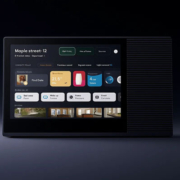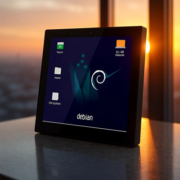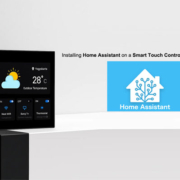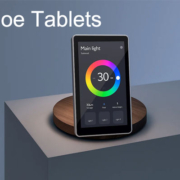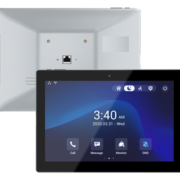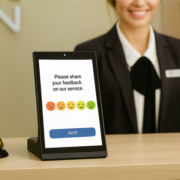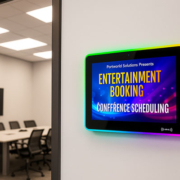How to Connect Smart Android Panels with Existing Systems
As smart homes, buildings, and industrial environments become increasingly complex, system integrators and developers often face one key question:
How can smart Android panels be connected to existing automation, security, and HVAC systems?
The good news is, modern Android-based smart control panels are designed with flexibility and compatibility in mind. With the right hardware interfaces and protocol support, these panels can seamlessly integrate with a wide range of systems — whether they’re legacy devices or modern IoT platforms.
1. Understand the Communication Interfaces
Smart Android panels typically support a variety of physical interfaces, making hardware-level integration easier:
- RS485 / RS232: Ideal for industrial and building automation systems, supporting protocols like Modbus RTU or BACnet.
- RJ45 Ethernet (with or without PoE): For stable LAN-based communication and easy connection to servers or central control units.
- Wi-Fi / Bluetooth: For wireless data exchange with IoT devices, apps, or mesh systems.
- GPIO / Relay / CAN / USB (optional): For specialized use cases like access control, motor control, or external sensors.
2. Choose Protocols That Match Your System
To ensure seamless integration, the Android panel should support or be customizable for specific communication protocols. Common ones include:
- Modbus (RTU/TCP): Widely used in industrial environments and HVAC systems.
- MQTT: Lightweight and ideal for cloud-connected smart home systems.
- KNX: Popular in building automation, lighting, and energy management.
- Zigbee / Z-Wave / BLE: Often used in smart home ecosystems (requires a gateway).
- REST API / HTTP / WebSocket: Used for custom server or cloud integrations.
Many Android smart panels come with SDKs or APIs, allowing developers to build or adapt apps to communicate over these protocols.
3. Use Custom Applications or Middleware
Depending on your requirements, there are two main approaches:
- Custom Android Apps: Develop or install Android applications that can communicate with your backend or control devices directly using the required protocol.
- Middleware Gateways: Use an intermediate gateway device that translates between protocols (e.g., KNX to MQTT or Modbus to HTTP), while the panel acts as a control interface.
For instance, many clients use Portworld Android panels as a UI frontend, while relying on external gateways for logic and data processing.
4. UI Customization and HMI Integration
Smart Android panels are ideal for creating intuitive, touchscreen-based Human-Machine Interfaces (HMI). You can:
- Build native Android apps using Java/Kotlin.
- Use web-based UIs (HTML5/JavaScript) hosted locally or from a server.
- Integrate third-party control apps if protocol and system compatibility is verified.
Panels like Portworld’s YC-SM08P and YC-SM55P support multi-touch, customizable UIs, and Android 11 OS, making them ideal for responsive, modern interfaces.
5. Ensure Power and Mounting Compatibility
Most smart panels today support PoE (Power over Ethernet), simplifying installation by combining power and data through a single cable. Others may require 12V/24V DC power input. Make sure your system layout accommodates the power needs and wall mounting requirements (such as 86-box compatibility).
6. Test and Optimize Integration
Before full deployment:
- Use test environments to verify protocol communication and UI behavior.
- Monitor performance metrics like latency, connection stability, and error handling.
- Ensure OTA update capability for future firmware upgrades.
Why Choose Portworld Smart Android Panels?
Portworld offers a wide range of Android-based smart control panels with:
- RK3566/RK3568 processors
- Android/Linux OS support
- Rich I/O (RS485, RJ45, PoE, Wi-Fi, Bluetooth)
- OEM/ODM customization
- Full SDK/API documentation
- Engineering support for protocol integration
Whether you’re working on smart homes, hotels, offices, or industrial environments, we provide robust and scalable solutions.

